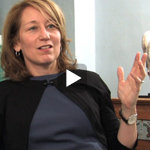I. Predicting the Unpredictable The former NEA Chair Rocco Landesman says he doesn’t see anything “apocalyptic” for the arts in a Trump presidency. Robert Lynch, the President of Americans for the Arts and a top advocate for the nonprofit arts sector, is more cautious and says Trump’s election “brings some uncertainty in terms of federal support for the arts.” Van Jones, the CNN pundit is blunt: Trump, he says, “is going to start a war.” If nothing else the recent election cycle has taught us to be very skeptical of those who say they can … [Read more...]
Making the Argument for Leadership Development
Linda Wood, Senior Director of the Haas Leadership Initiative at the Evelyn and Walter Haas, Jr. Fund, recently wrote an interesting post on The CEP Blog of the Center for Effective Philanthropy, "The Leadership Development Disconnect." Working both in the field of leadership development and on program evaluation, I was encouraged to see these important issues highlighted. Much of my experience is consistent with the author’s. In the post, Wood states: "…not enough funders are investing in strengthening the leadership of their grantees. And … [Read more...]
What does “sustainability” mean in the arts and culture field?
Watch the following video in which Diane Ragsdale, a faculty member of the Salzburg Global Forum for Young Cultural Leaders, asks some important questions about sustainability in the arts – what does it mean for organizations and for the field. Add your voice to the discussion. Use the comments below to weigh in with your thoughts on sustainability. … [Read more...]
Finding Your Funding Model
In a follow up to their 2009 article 'Ten Nonprofit Funding Models,' Peter Kim, Gail Perreault and William Foster of the Bridgespan Group argue organizations often have a clearer vision of what their programs will be in five years than of the funding that will support them. They offer a road map for leaders seeking to develop appropriate funding models for their organizations: Getting a deep understanding of one’s own fundraising approach and history, learning from peers, tallying the likely costs of change and weighing them against expected … [Read more...]
Lies, Damned Lies, and Medical Science
His model predicted, in different fields of medical research, rates of wrongness roughly corresponding to the observed rates at which findings were later convincingly refuted: 80 percent of non-randomized studies (by far the most common type) turn out to be wrong, as do 25 percent of supposedly gold-standard randomized trials, and as much as 10 percent of the platinum-standard large randomized trials. These were challenging facts for me, as a deep believer in science and rigorous research. It's worth considering the meaning of these findings … [Read more...]
Will the recession mean theatre takes fewer risks?
The Guardian's Theatre Blog has a thought-provoking post, siting a survey of arts and culture professionals that revealed 41% will be programming more "popular" work and 37% will be reducing the amount of "challenging" work that they commission. As an arts leader, how do you balance financial and creative risks? Read Will the recession mean theatre takes fewer risks? | Eleanor Turney | Stage | guardian.co.uk. … [Read more...]


